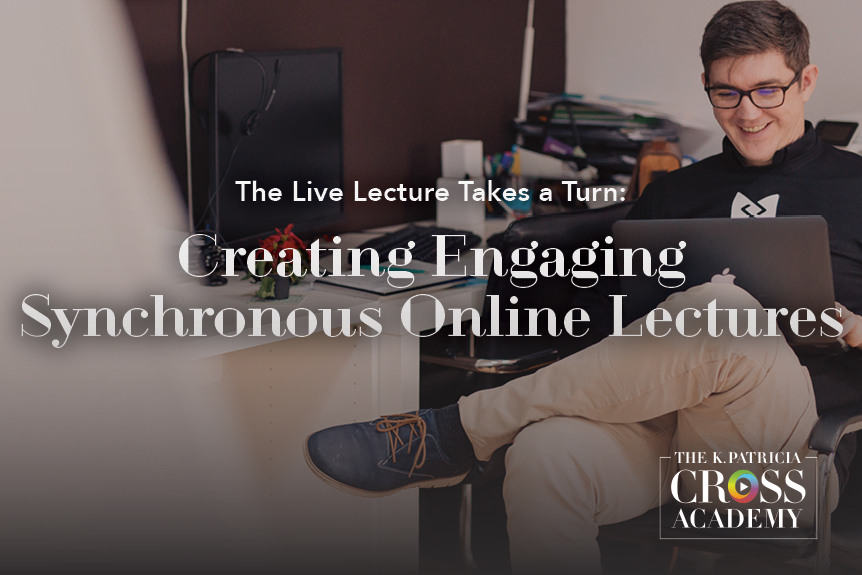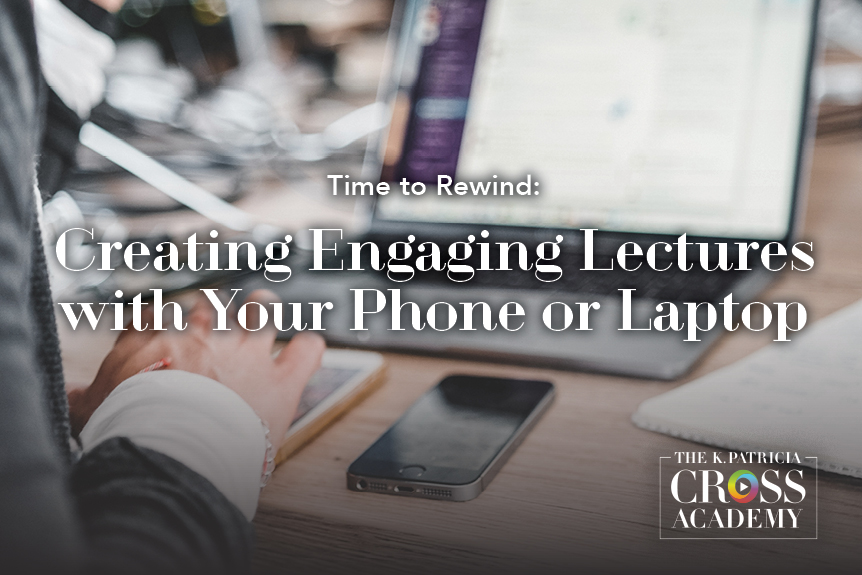CrossCurrents Library
Featured Collections
Topics

Many times, instructors feel like they “should” assign discussion board posts. They do so for a variety of reasons, including to simply receive the “regular and substantive interaction” between students and teachers required in virtual classrooms. Lively discussions are a hallmark of face-to-face courses. Likewise, for decades, discussion boards have been a staple of online courses. But doing discussions online and through a text-based medium offers its own set of challenges.

Many of us have had to sit through boring, less than engaging lectures in a classroom. The speaker seems bolted to the floor, drones on and on in a monotone voice, and shares visuals that consist of nothing but slide after slide of bullet-point text. We know a bad lecture when we experience it. But we also know a good

The COVID-19 pandemic has led to many if not most college faculty teaching in virtual classrooms. While many of us are turning to synchronous lectures with video conferencing tools such as Zoom or Blackboard Collaborate, many of us are also choosing to create asynchronous video lectures that students can watch anytime, anywhere. There are many valid reasons for making this

Students will be better prepared to succeed in today’s complex and quickly changing world if they understand how they learn and can manage their own learning. Metacognition is a higher-order thinking process that involves active control over mental processes. Researchers and instructors alike have recognized the need to intentionally weave metacognitive strategies into teaching and learning activities. Metacognitive activities guide

“Any fool can know. The point is to understand.” ~Albert Einstein Instructors have many important decisions to make about what to teach, how to teach it, when to review, when to move on, and so forth. We are better able to make important instructional decisions when we have good information about whether and how well students have learned to base these

“Students don’t care how much you know until they know how much you care.” ~Anonymous Most of us chose careers in academia because we care deeply about our disciplines or fields. It can be discouraging, therefore, to face students whose indifference to our courses is palpable. Yet caring is an essential element of their learning. As Fink suggests, “When students care

“Knowledge without application is like a book that is never read” ~Christopher Crawford As college teachers, we want students to think deeply about course content and skills, yet sometimes it feels like students never progress beyond surface-level understanding. One of the best ways to help students get to deeper learning is to have them use what they have learned in

“When you learn, teach. When you get, give.” ~Maya Angelou Many of us teaching in higher education don’t think about lesson planning. But creating a lesson plan can be important to a successful class and for student learning. Creating a lesson plan prompts instructors to identify learning objectives, organize course content, plan learning activities, and prepare learning materials. The process

“I like a teacher who gives you something to take home and think about besides homework.” ~Lily Tomlin When you are choosing what students will do during the semester, have you ever wondered whether you are assigning too much or too little work? Finding an appropriate workload balance for students can be a real challenge. And surprisingly, little research about

“Design is the intermediary between information and understanding.” ~Hans Hoffman When we design a course, we typically do so before actually meeting the students who will enroll in it. We have to determine how to best teach the particular content and skills to the students we will meet. Even if we design the best content and pedagogies possible, if we

“In learning you will teach, and in teaching you will learn.” ~Phil Collins Before each semester, we sit down to write a syllabus for the coming course, most often without having met the people who will fill our rosters. Most of us have to (or want to) include learning objectives in this syllabus, a task that can be simultaneously inspiring

“It’s what you learn after you know it all that counts.” ―John Wooden Many “edumyths” exist, and unfortunately these can be harmful to students and even to teachers. What are we talking about? Edumyths are common beliefs about education. These myths often express claims about what practices benefit learning or learners. They typically have no basis of fact, however. Either